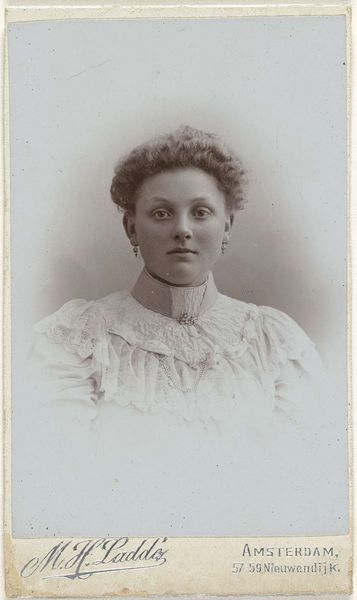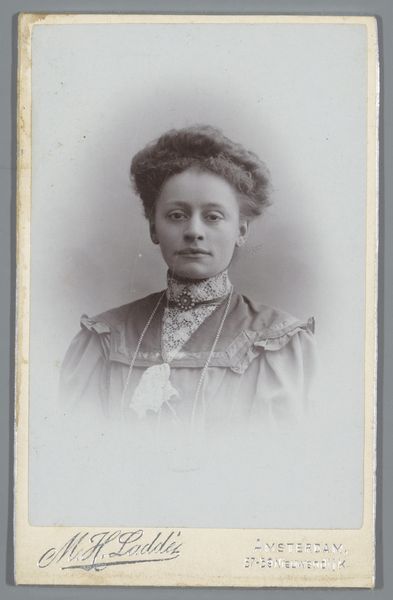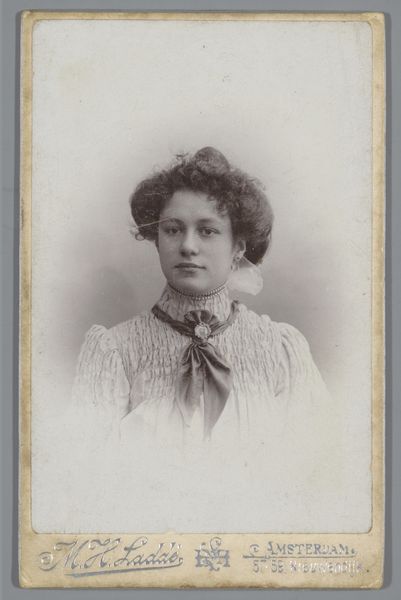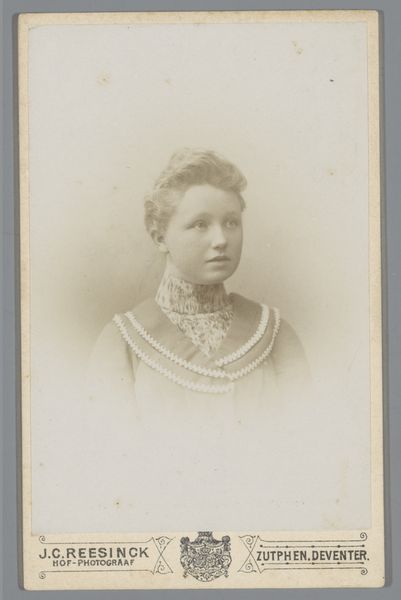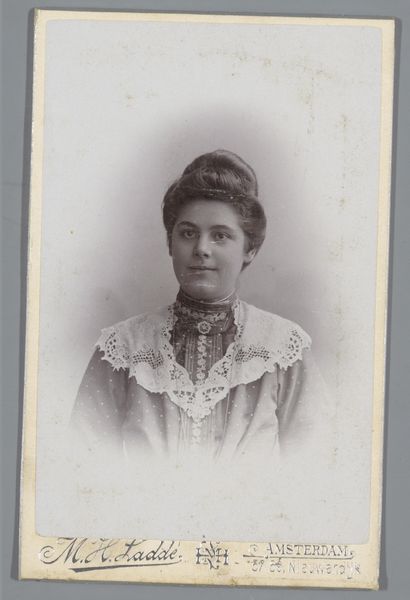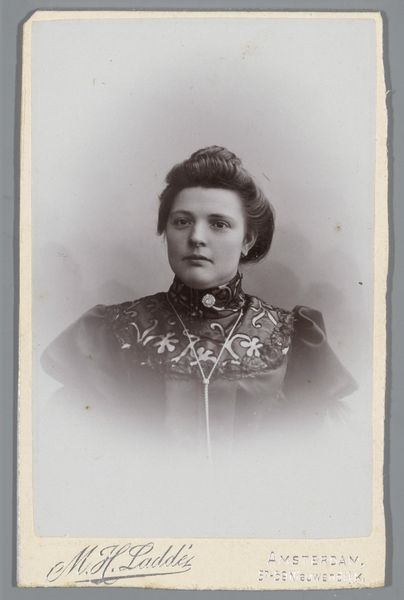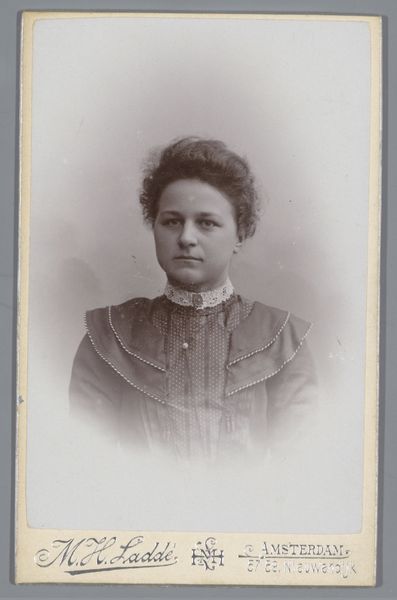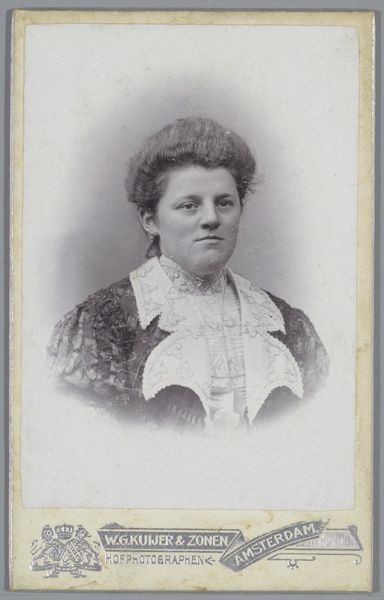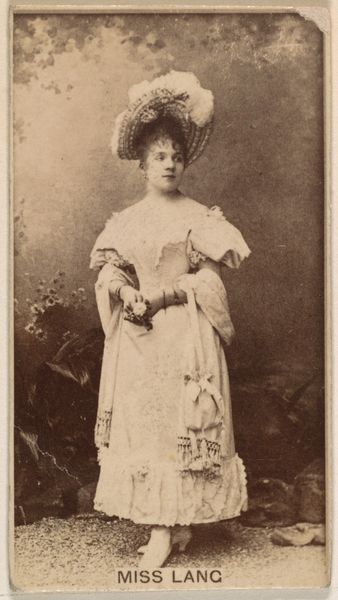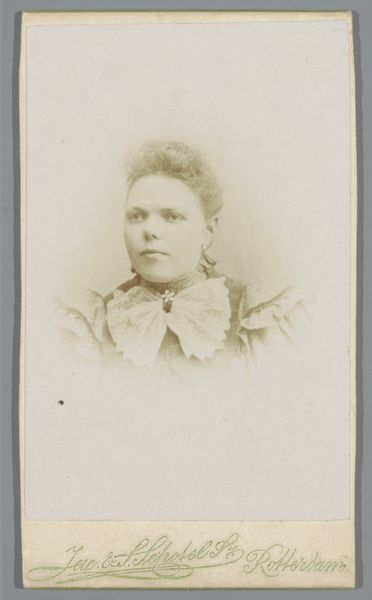
Dimensions: height 82 mm, width 54 mm, height 102 mm, width 62 mm
Copyright: Rijks Museum: Open Domain
Editor: Here we have Josephus Hendrikus Petrus Coppens' "Portret van Aafje Vink," a gelatin-silver print dating from around 1890 to 1920. It's quite striking how the ruffled collar frames her face. What can you tell us about this piece? Curator: Let's consider the labor and social implications embedded in this object. It's not simply a pretty portrait; it represents access and consumption. Gelatin-silver prints like this were becoming more common, impacting photographic studios and the accessibility of portraiture. Editor: In what way? Curator: The rise of gelatin-silver prints marks a shift in photographic production. Earlier processes were more cumbersome and required specialized knowledge. This new process streamlined production, allowing smaller studios like Coppens' in Purmerend to thrive. We have to ask, who had access to this relatively new technology and how does it challenge what we traditionally think of as high art versus craft? Editor: So, the ease of the process democratized art making? Curator: Precisely! It offered new opportunities but also altered the economics of image production. The rise of such techniques had a profound impact on artists’ livelihoods. The sitter’s clothes also factor in. Consider the lace, the necklace, the hair: These signifiers point to the material wealth, class, and access of the Vink family. These kinds of items and photographic technologies had a social context linked with new developments in labor, materiality, and consumption. Editor: That makes you look at the portrait differently. The materiality becomes key to its interpretation, challenging its value as simply a record of a person's likeness. Curator: Indeed. Focusing on these material aspects expands the story the photograph can tell us. Editor: I never considered photography through a materialist lens before, but now I appreciate it as more than just an image. Curator: Exactly! By considering its production and material elements, we reveal complex social and economic networks within the artwork itself.
Comments
No comments
Be the first to comment and join the conversation on the ultimate creative platform.
